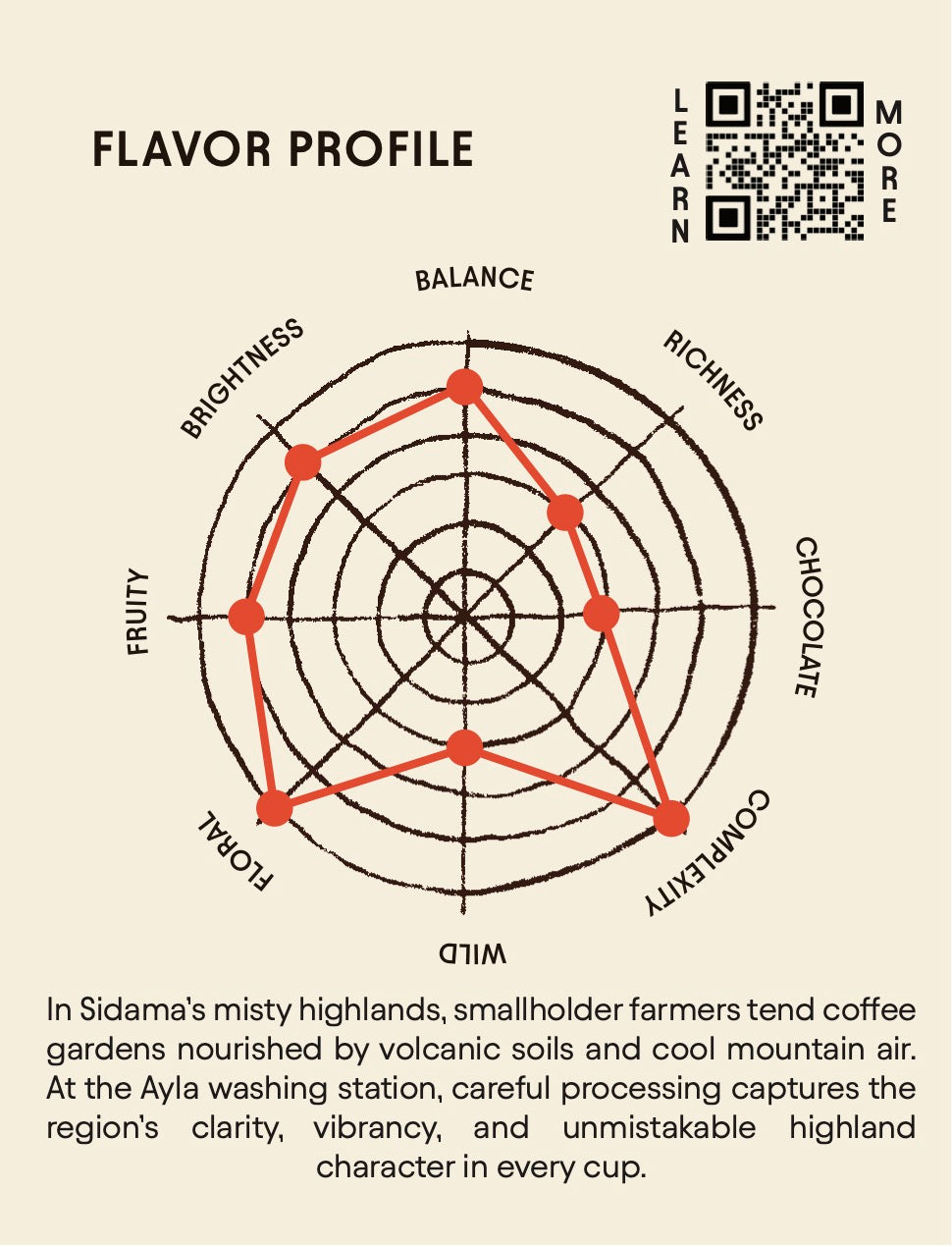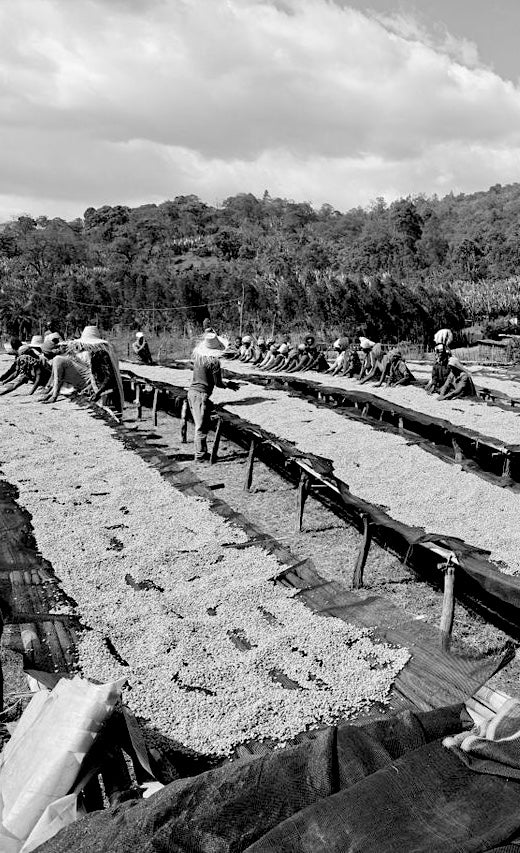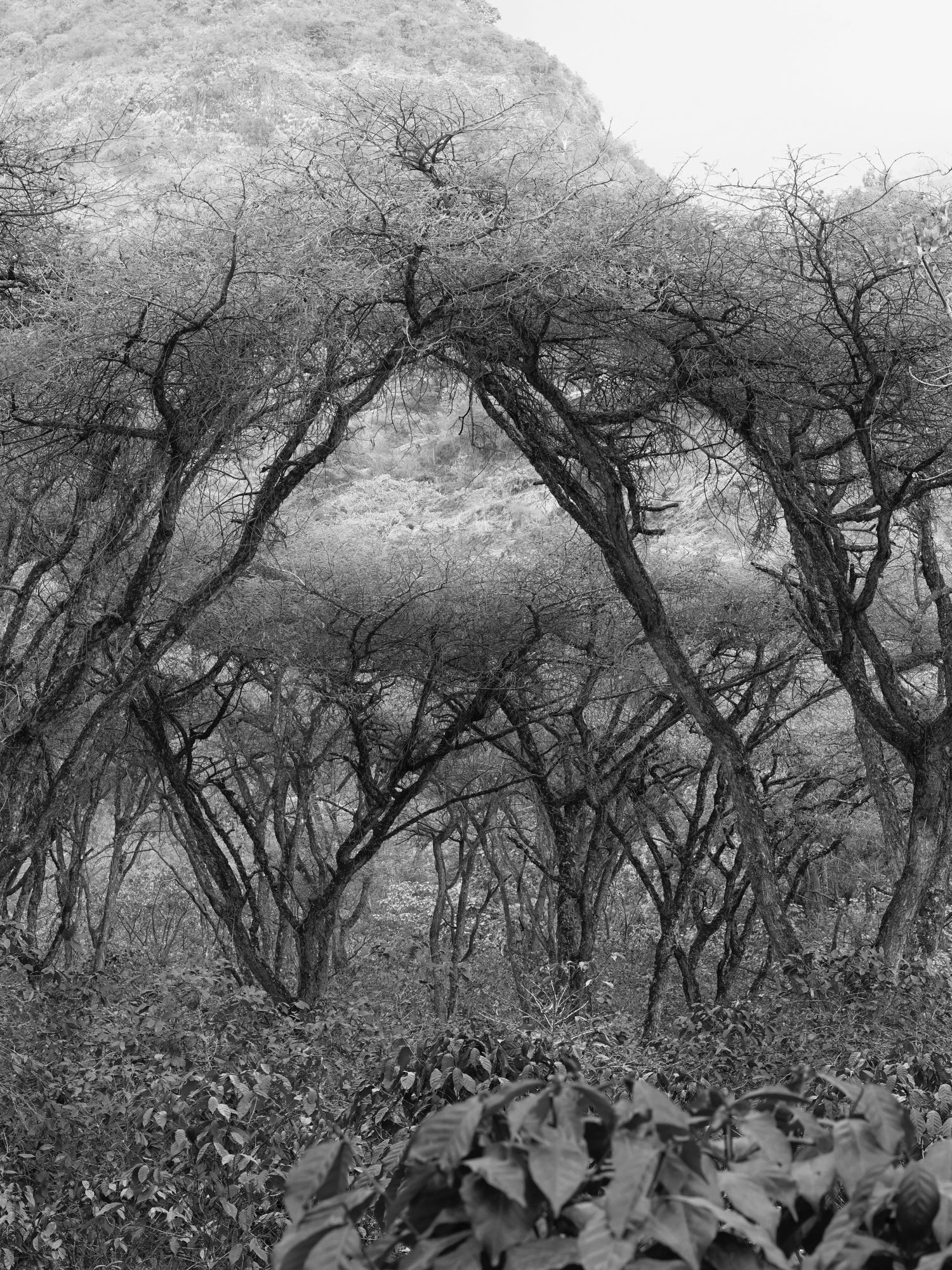Ethiopia Ayla Bombe - Washed Process
We roast and ship Monday - Friday.
Orders received before 9am typically ship same day.
Couldn't load pickup availability




Technical Information
Producer: Various small-holder producers - Ayla Washing Station
Region: Shantawene, Sidama, Ethiopia
Harvest: December to February 2025
Varietal(s): Ethiopian Heirloom
Process: Fully Washed
Altitude: 2100-2400 masl
Exporter: Testi Coffee
Importer: ESCO
Agrton Gourmet Color: 108 (light)

Coffee Story
Sidama is a highland coffee-producing region in southern Ethiopia, recognized for its distinctive washed coffees. At elevations above 2,000 meters, cool air, steady rainfall, and fertile volcanic soils slow cherry maturation, building dense beans with layered flavor. Most farms are small, family-run “home gardens,” where coffee grows alongside enset (false banana), maize, and fruit trees—a diversified approach that’s as practical as it is traditional. Processing happens at centralized washing stations, where long, cool fermentations and unhurried drying bring out the region’s hallmark profile: clean, floral, and bright with crisp citrus and stone fruit.

This specific lot comes from Ayla washing station owned by Testi Coffee. Ayla station works with over 700 smallholder farmers from Shentawene town and the surrounding Bombe district. Sitting near 2,000 meters on the banks of a high-altitude river, Ayla takes full advantage of the cooler climate, allowing for extended fermentation and drying that sharpen flavor and preserve aromatics. The result is a coffee alive with floral aromas and sugary peach notes, rounded by a white tea elegance, lifted with citrusy brightness, and finished with a silky, refreshing mouthfeel. It’s a standout expression of the Sidama highlands: precise, vibrant, and memorable.
Collapsible content
Varietal
While Ethiopia has identified thousands of distinct coffee varieties—some estimates suggest over 10,000—they’re most commonly grouped under broad labels like Heirloom or Landrace. But these terms barely scratch the surface of what makes Ethiopian coffee so extraordinary.
Coffee is native to Ethiopia, and much of what’s grown here isn’t the result of breeding or lab-driven hybrids. Instead, these are naturally occurring Arabica varietals—wild strains that have evolved and cross-pollinated for centuries in their original environment. Grown by smallholder farmers across diverse microclimates, these coffees are the purest expression of place and plant. They offer a genetic and sensory diversity that’s unmatched anywhere else in the world.
In every cup, you're tasting a lineage that’s remained largely untouched—coffee as it has always been, shaped only by nature and time.
Processing
Coffee processing in Ethiopia is refreshingly straightforward—and intentionally so. When working with world-class genetics and unmatched terroir, the goal isn’t to manipulate the coffee, but to let its natural beauty shine through. A heavy-handed approach would only get in the way.
It all begins when ripe cherries are delivered to the washing station. They’re immediately sorted and floated to separate the good from the bad—low-density, damaged, or underripe cherries are removed and rerouted to commodity-grade lots, while only the ripest, most vibrant fruit continues on.
Next comes depulping, followed by a two-stage fermentation process. First, the coffee undergoes dry mass fermentation in tanks for 18–24 hours. Then, clean water is added for an additional 18–24 hours of wet fermentation. This method boosts clarity and structure in the cup. After fermentation, the coffee is washed through grading channels that perform another round of density sorting, ensuring only the best beans remain.
Drying takes place on raised beds under the sun. To avoid overheating and preserve the integrity of the seed, the coffee is dried in the gentler morning and afternoon hours, then covered or moved to shaded areas during the midday heat. Parchment is turned constantly by hand to promote even drying and to catch any remaining defects.
From floatation to fermentation to drying, each step is deliberate—designed to protect and elevate the coffee’s natural brilliance. The result is a clean, expressive cup with brightness, clarity, and energy.
Once the coffee is fully dried, it rests before being sent to the dry mill for final sorting, milling, and export.
Terroir
As the birthplace of coffee—and the only place on earth where it grows wild—Ethiopia holds a uniquely sacred place in the world of coffee. For anyone involved in growing, roasting, or simply enjoying a great cup, it’s hard not to feel a deep connection to this land.
In Ethiopia, coffee still grows in its natural, wild state within lush forest ecosystems, where indigenous communities harvest it using traditional, cooperative methods. Beyond the forests, countless smallholder farms stretch across the coffee belt, joined by a handful of larger estates. Across this wide range of production styles, world-class coffees seem to emerge effortlessly from the ground.
Of course, great coffee never happens by accident. Even in Ethiopia, exceptional quality takes real dedication. But when you're working with native heirloom varietals—genetically diverse, uncultivated, and perfectly adapted to their environment—and combining them with the unmatched terroir of coffee’s ancestral home, you’re already starting with a remarkable advantage.
It’s no wonder Ethiopia continues to produce some of the most expressive, complex, and beloved coffees in the world.


